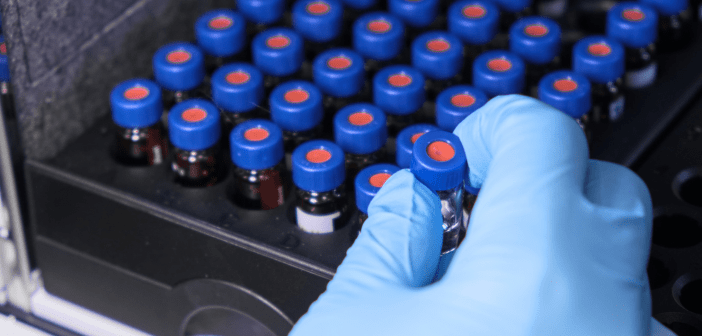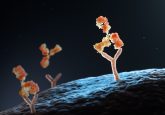Ask the Experts: the impact of internal standard response variability during chromatographic bioanalysis

In this Ask the Experts feature, some of the leading experts within the LC-MS bioanalysis field comment on what internal standard (IS) is, how the 2019 FDA guidance on the evaluation of IS response has impacted the development and use of bioanalytical assays, and the strategies that help mitigate excessive IS response variation in bioanalytical methods.
Meet the experts
 Katherine Yahvah
Katherine Yahvah
Senior Scientist II and Principal Investigator
Alturas Analytics, Inc. (ID, USA)
Katherine Yahvah is a Senior Scientist II and Principal Investigator at Alturas Analytics, Inc. As Principal Investigator, her work focuses on the development and validation of good laboratory practice (GLP) compliant LC-MS/MS methods for a variety of compounds, including unstable and unorthodox small molecule drug candidates. Her expertise spans from supporting projects in the discovery phase to regulated bioanalysis of Phase IV studies. She completed her PhD at the University of Idaho (USA) in 2012 studying maternal health and the human milk microbiome and was recently awarded the Alumni Achievement Award from the College of Agriculture and Life Sciences at the University of Idaho.
 Deborah Barkley
Deborah Barkley
Principal Scientist
Novartis BioMedical Research (NJ, USA)
Dr Deborah Barkley is a Principal Scientist responsible for bioanalytical and toxicokinetic monitoring at Novartis BioMedical Research. She received her PhD in Chemistry from Stony Brook University (NY, USA). Her PhD projects included polymer-dendron and peptide-dendron hybrid materials, as well as nanocomposite materials chemistry. At Novartis, Dr Barkley is responsible for non-clinical bioanalytical and toxicokinetic monitoring as well as clinical bioanalytical monitoring. She has strong expertise in LC-MS bioanalysis and toxicokinetics. She is also involved in the implementation of smart sampling in global health projects, where there is a need to reduce the patient burden associated with venous blood draws.
 Yunlin Fu
Yunlin Fu
Senior Principal Scientist of Bioanalytics
Novartis BioMedical Research
Yunlin Fu is a Senior Principal Scientist of Bioanalytics in the Department of Pharmacokinetic Sciences at Novartis BioMedical Research, where she scientifically oversees the regulated and non-regulated LC-MS bioanalysis of drug candidates and/or their metabolites in various species matrices and toxicokinetic assessment at the third parties in support of various Novartis drug development (preclinical and clinical) programs. In her scientific capacity, Yunlin focuses on the evaluation and implementation of new technologies in LC-MS bioanalysis of new modalities such as small/large molecule conjugates, radioligand molecules and siRNAs. Yunlin received her MS degree from Rutgers University, New Brunswick (NJ, USA). She is a member of the AAPS-BA community oligo discussion group. She has published more than 25 research articles and delivered more than 10 presentations (oral and poster) at scientific workshops or conferences. She is the co-editor of a Wiley book titled ‘Sample Preparation in LC-MS Bioanalysis’ (John Wiley and Sons, 2019).
 Matthew Halquist
Matthew Halquist
Associate Professor, Department of Pharmaceutics
School of Pharmacy, Virginia Commonwealth University (VA, USA)
Dr Matthew Halquist is an Associate Professor in the Department of Pharmaceutics, School of Pharmacy, Virginia Commonwealth University (VCU) and Director of the Bioanalytical Shared Resource Laboratory. He received his bachelor’s degree in biology, along with minor studies in chemistry and forensics science, and a PhD in pharmaceutical sciences. After eight and a half years in private industry developing LC-MS bioanalytical methods, he returned to academia in 2006 and continued working as Technical Director in the Bioanalytical Core Laboratory at VCU. Since 2013 as Director, Dr Halquist has led all collaborations and has helped graduate students with their research. Dr Halquist has over 100 publications, USP monographs and invited presentations. His research interests include bioanalytical techniques for analysis of therapeutic proteins, drugs of abuse research, tobacco products research, biomarkers of exposure, API/product analysis and in vitro devices to evaluate bio-relevant drug release.
Questions
Katherine: The purpose of the IS is to correct for external factors that introduce variability into assay performance. The IS is added to all calibrators, QCs and incurred samples as early as possible in the extraction process, and the instrument response for the analyte of interest is normalized to the instrument response for the IS prior to reporting. An IS is classified as an analog or stable label, where an analog IS is a compound that is selected to be as structurally similar as possible to the analyte under investigation, and a stable label is structurally identical to the analyte of interest, except that it is modified to incorporate heavy atoms (2H, 15N or 13C) into the chemical structure. The use of a stable label is preferred over the use of an analog IS because the stable label is nearly identical to the analyte of interest. Consequently, it responds similarly to external variables impacting the assay and is more effective at correcting the instrument response for the analyte of interest.
The use of an IS to normalize reported values adds a great degree of precision to the HPLC-MS/MS assay. Normalization with an IS will correct for variations in sample injection volume, some types of preparation errors, matrix effects, instrument fluctuations and other potential analytical errors. The correct use of an IS in a bioanalytical assay lends to highly reproducible results.
Yunlin & Deborah: Internal standard (IS) is a substance that has physicochemical properties close to the analyte of interest and as a result, behaves similarly or identically as the analyte in chromatographic analytical assays. In practice, an IS is introduced to calibration standards, quality controls and study samples at a constant amount prior to sample extraction in each analytical run. It goes through the same bioanalytical workflow, including sample preparation, autosampler injection, chromatographic separation and mass spectrometric detection, to compensate for the variation that occurs to the analyte due to the complexity of biological sample compositions and bioanalytical processes. With this regard, IS has been widely employed in quantitative LC-MS bioanalysis in support of drug discovery and development and post-approval therapeutic drug monitoring.
In general, the closer an IS is structurally to the analyte of interest, the better it tracks the analyte in LC-MS bioanalysis. Therefore, a stable isotope labeled internal standard (SIL IS), e.g., 13C, 15N, 2H is preferred whenever possible, as they have the same structure as the analyte and co-elute with the analyte. However, it is often that SIL IS is not readily available, especially in the early phase of the project, due to the excessive cost and often long lead time in chemical synthesis. In these cases, a structural analog or other molecule may be used as long as it tracks the analyte of interest in the bioanalytical process. The tracking could be evaluated by accuracy, precision, linearity, matrix effect and other factors. In summary, the selection of a good IS is essential in LC-MS bioanalysis to ensure the robustness of the intended bioanalytical assay.
Matthew: An IS is an integral part of LC-MS and/or chromatography-based bioanalytical assays. Every sample, with the exception of a double blank, receives the same concentration of IS solution, thus allowing an effective correction of uncertainty. The IS provides an internal control of errors associated with matrix effects, extraction processing, and sometimes digestion efficiency (as a ‘winged’ or extended SIL). A stable isotope labelled internal standard (SIL-IS) is the preferred IS; however, a structural analog (SA-IS) can serve a similar purpose of a SIL-IS. An SA-IS should have similar physicochemical characteristics to emulate the analyte of interest’s chromatography, ionization and extraction efficiency. Either a SIL-IS or SA-IS should improve the accuracy and precision of the method. Besides precision and accuracy, matrix effects, reinjection reproducibility, linearity and other stability experiments can provide the necessary information to indicate that an IS is appropriate for the method.
Katherine: The 2019 FDA guidance on the evaluation of IS response underlines the importance of reviewing IS response patterns across the QCs, calibrators and incurred samples in an analytical run. The guidance suggests that, in general, if IS response variability in incurred samples is less than the variability that is observed in the calibrators and QCs, then it is not likely to impact the reported results.
The guidance document provides examples of IS response variability patterns that may be problematic. These examples include a single sample with IS response that is dramatically different from the other samples in an analytical run, a gradual drift (increase or decrease) in IS response in the samples from a specific subject when there are no calibrators or QC samples interspersed amongst the samples in question, or IS responses for the samples from a specific subject that are consistently higher or lower than the responses for the calibrators or QCs.
Importantly, the guidance advises on how to investigate patterns of questionable IS response variation when it occurs. In some cases, this is as straightforward as following the pre-established procedures for re-analysis of individual samples with excessive IS variation per laboratory SOPs. In other cases, re-analysis of a specific subset of samples may be warranted to determine whether patterns in IS response variation are impacting the reported results.
Katherine: As a result of the release of this guidance, there has been an increase in discussion surrounding the importance of IS response review and subsequent investigation of variations that occur. In our experience, sponsors require a greater degree of scrutiny surrounding analytical runs where IS response variability is present. To address this heightened interest in IS response, several best practices should be followed. Each analytical run should be visually reviewed with plots of IS concentrations across the sample sequence to determine if any specific trends are occurring that may require additional investigation. Further, each lab should have pre-determined criteria for identification of samples that have IS response that varies significantly from the samples in the rest of the run. There should also be criteria directing when/how reanalysis of these samples should occur and how the original and repeat results for these samples should be reported.
For some more complicated IS response trends it is difficult to define concrete criteria for when investigation should occur. For example, the samples for a given subject may consistently fall within defined numerical criteria for IS response deviation from the mean, but if all of the samples for that subject are consistently elevated there may be cause for additional review. For this reason, IS response patterns should be evaluated on a run-by-run basis.
Yunlin & Deborah: In 2019, the FDA published a guidance entitled ‘Evaluation of Internal Standard Responses during Chromatographic Bioanalysis: Questions and Answers’. The guidance provides detailed recommendations on monitoring and handling the variability of IS response in chromatographic bioanalysis when new applications or biological licensing are submitted. It triggered intense discussions within the bioanalytical community on the best practices in evaluation, identification and impact assessment of abnormal IS response variability in LC-MS bioanalysis to help ensure accurate and reliable bioanalytical data.
It is not uncommon to observe variable IS response across an LC-MS run. Given the complexity of biological sample compositions, multiple steps of sample processing and possible variation in injection volume, etc., a certain level of IS response variability is anticipated and considered acceptable. For a robust assay, the IS response is expected to be relatively constant between the calibration standards (Cs) and quality controls (QCs), and incurred samples. Excessive variability of IS response can be encountered for various reasons, such as human error(s), instrument malfunction, study subject-specific matrix effect and interference, ionization competition, etc. The notable variability may raise doubts about the accuracy of the measured results and suggest a suboptimal analytical assay, even though the Cs and QCs results may meet the acceptance criteria. Therefore, closely monitoring IS response in each run is crucial to timely identifying any abnormality in sample processing and/or assay performance.
The 2019 FDA guidance recommends to pre-define in SOP the acceptance window of IS responses in a run. Any samples with IS response outside of the predefined acceptance window need to be reassayed following pre-established criteria (e.g., number of replicates, final value to be reported). Trend analysis of IS response patterns in study samples vs Cs/QCs is encouraged. When needed, scientifically justified investigation should take place to evaluate the possible impact.
Matthew: The guidance provides new insight into the FDA’s thinking on IS variations in chromatographic data and how labs may interpret IS plot variations [1]. This additional guidance on IS response by the FDA may result in revised SOPs related to method development (MD), validation and, if necessary, investigations. During method development and/or validation, it is important to emulate an actual sample run with selectivity/specificity experiments. Individual lots should be fortified and unfortified with analytes of interest and IS. Furthermore, a similar size run (i.e., 1 full 96-well plate) should be mimicked during MD or validation to evaluate the robustness of the IS and ultimately the bioanalytical method. An investigation SOP should cover the impacts of IS variation and any corrective action(s) needed. The ICH M10 guidance outlays criteria for IS response including specificity testing for IS interference and documentation of IS response including plots for each run (both failed and accepted runs)[2].
Katherine: Occasionally, we come across a method where a subset of incurred samples will demonstrate IS response variability that is higher or lower than the calibrators and QCs, and this result is repeatable when the samples are re-analyzed. In accordance with the recommendations outlined in the 2019 FDA guidance on the evaluation of IS response, our practice is to dilute these samples with the same matrix that is used to prepare the calibrators and QCs and repeat analysis. This approach investigates whether the IS response variability is caused by factors present in the sample matrix itself. In most cases, dilution of the samples will generate a result with IS response that is more similar to the calibrators and QCs. In our experience, a comparison of the original and diluted repeat results usually finds that the reported concentrations differ by less than 20% regardless of the degree of IS response variability. In these cases, it is evident that although IS response variability is observed in the assay, it is not impacting the reported sample concentrations. Indeed, it can be argued that in these scenarios the IS response variation that is observed is a symptom of an IS that is doing exactly what it is designed to do: compensate for matrix effects in incurred samples.
Yunlin & Deborah: Extensive IS response variability can be caused by many factors, including but not limited to matrix effects and interference, instrument/device-related issues, ionization competition, instability, etc. Depending on how well the IS tracks the analyte of interest, not all the abnormal IS responses are associated with erroneous measurements. Generally, the abnormal IS response due to inconsistent injection volume, inaccurate sample extract transfer or addition of reconstitution solution, would have no impact on the measured results, as long as the IS is a good analog of the analyte and is well mixed with the analyte in all samples in the early stage of sample extraction.
It is worth noting that the study sample-specific matrix effect due to co-eluting drug metabolites, co-medication and its metabolites, or dosing vehicle might not be seen in Cs and QCs but exist in study samples. A good IS, especially SIL IS, is often able to track the analyte well in the respective subject samples for accurate measurement. An effective approach to assess this is to apply proper dilution factor to the study samples flagged with abnormal IS response and compare the repeated results against the original ones.
On the other hand, an IS response falling within the pre-defined acceptance window does not guarantee the accuracy of the measured results. For example, inaccurate IS addition to a sample has a significant impact on the measured concentration.
In conclusion, instances of abnormal IS responses and associated impact can vary. Necessary efforts should be made to evaluate the IS response pattern/trend of the unknowns versus the knowns (Cs and QCs) to identify sporadic or systematic IS response variability that might impact the accurate measurement of the respective study samples. A step-to-step investigation is necessary to help identify the possible root causes, assess the possible impact and determine appropriate remediation, if needed.
Matthew: Yes, a few different issues have been seen related to specific subject samples or human error. IS response variation could affect specific samples and not calibrators or quality controls. Often times a shift and drift investigation may be needed to determine if the variation is isolated to a subset of samples, a participant or a part of the run. An immediate shift in response, albeit in either direction, often represents a human error. During sample preparation, the analyst may have added IS incorrectly or not at all. A drift could be the same issue; however, it could be driven by a subset of samples from a specific patient. This indicates a pre-analytical variable associated with sampling or collection, pathology of patient, matrix effects or even an interference with a concomitant medication.
Katherine: Minimization of matrix effects is one way to reduce IS response variation in a bioanalytical assay. Matrix effects occur when unknown compounds in subject samples cause the suppression or enhancement of analyte ionization during MS/MS analysis, and subsequently, fluctuation in instrument signal. The sample extraction process can be optimized to remove compounds that cause matrix effects from the sample extract by testing different extraction solvents in protein precipitation methods, or alternate extraction methods such as liquid-liquid extraction or even solid phase extraction (SPE) when necessary. Another way to reduce matrix effects is to ensure that effective chromatographic methods are employed. This can be accomplished by using an appropriate HPLC gradient and column combination that allows for adequate separation of the analyte of interest and the compounds that cause matrix effects. Reduction of matrix effects and subsequently the reduction of IS response variation should be thoroughly investigated and optimized during analytical method development and validation.
Yunlin & Deborah: The root causes of excessive IS response variability in LC-MS bioanalysis include but are not limited to human errors (e.g., mis-spiking), inconsistent extraction recovery, lot-dependent matrix effects, instrument/device-related issues and ionization competition. Some effective approaches to mitigate excessive IS response variation are summarized below:
- Addition of proper volume of IS working solution: Although there is no strict rule on how much IS working solution should be added to each sample, the addition of an appropriate volume of IS working solution allows for simple visual differentiation of sample wells with IS added from those with no IS added or double spiked. Therefore, the addition of a relatively small volume (e.g., less than 50% of sample aliquot) of IS working solution should be avoided. Furthermore, an appropriate tip size should be selected when a repeater pipette is to be used.
- Efficient and consistent extraction recovery: A thorough mixing is essential in sample extraction to ensure consistent and efficient extraction recovery. In protein precipitation, a small volume of acid or base can be added to the precipitant to help dissociate the analyte and IS from the possible binding with matrix components (e.g., proteins). The addition of a small percentage of methanol or ethanol in acetonitrile as a protein precipitant is also effective in reducing variability in extraction recovery.
- Minimized matrix effect: The matrix effect should be systematically evaluated during assay development and validation. An IS is expected to experience a similar matrix effect as the analyte, which can be reflected by the IS-normalized matrix factor being close to one across different analyte concentration levels. The evaluation of several individual matrix lots is important to assess the potential lot-to-lot variation for optimization of the intended assay.
- Using a robust analytical platform (e.g., liquid handler, autosampler, mass spectrometer) is necessary to minimize variability in sample extraction and analysis.
Matthew: Appropriate method development and validation experiments should be evaluated to minimize IS response variation. These include:
- pipetting
- concentration
- robustness
- interference
- matrix effects
- stability
For pipetting, it is critical if added manually or with an automated system, to utilize the appropriate calibrated pipette (i.e., positive displacement repeater), volume and pipette tip selection. Concentration should be based on the linear range, close to the geometric mean. However, IS concentration should also consider if a deuterated internal standard is used that may have a slight impurity of the analyte being tested. In this case, it is even more critical to look at IS interference or contribution to the analyte. Robustness is also key since pharmacokinetic studies will result in many assays. Therefore, emulating an analytical run or more is necessary to see if IS variation can be minimized. Interference from the IS should be evaluated as stated in the ICH M10 guidance where response should not exceed 5% in the lower limit of quantification (LLOQ) sample. Matrix effects may be evaluated both qualitatively (i.e., post-column infusion) and quantitatively (i.e., post-extraction addition, fortified specificity). Stability of the IS can also contribute IS variation; therefore, stability for stock solutions and working (i.e., IS spiking solution) should also be verified, including if there is any non-specific binding during storage.
If IS variation is apparent, some other mitigation strategies during method development that should be considered are:
- change the volume added
- change the diluent used
- change the mixing or vortexing protocol
- change the order in which IS is added (prior to samples)
- IS concentration
- change deuterated IS to a different isotope IS if feasible
- evaluate an increased amount of deuterium in the IS
- possibly consider if the final solvent (i.e., reconstitution solution) is impacting the IS variation and change if necessary.
If you enjoyed reading Yunlin’s and Deborah’s responses to this feature, you can find more details in their review paper:
Fu Y, Barkley D, Li W, Picard F and Flarakos J. Evaluation, identification and impact assessment of abnormal internal standard response variability in regulated LC−MS bioanalysis. Bioanalysis, 12(8), 545-559 (2020).
In association with:
References:
- Evaluation of internal standard responses during chromatographic bioanalysis: questions and answers. [September 2019]. https://www.fda.gov/regulatory-information/search-fda-guidance-documents/evaluation-internal-standard-responses-during-chromatographic-bioanalysis-questions-and-answers (Accessed 27 November 2023)
- M10 bioanalytical method validation and study sample analysis. https://www.fda.gov/regulatory-information/search-fda-guidance-documents/m10-bioanalytical-method-validation-and-study-sample-analysis (Accessed 27 November 2023)





